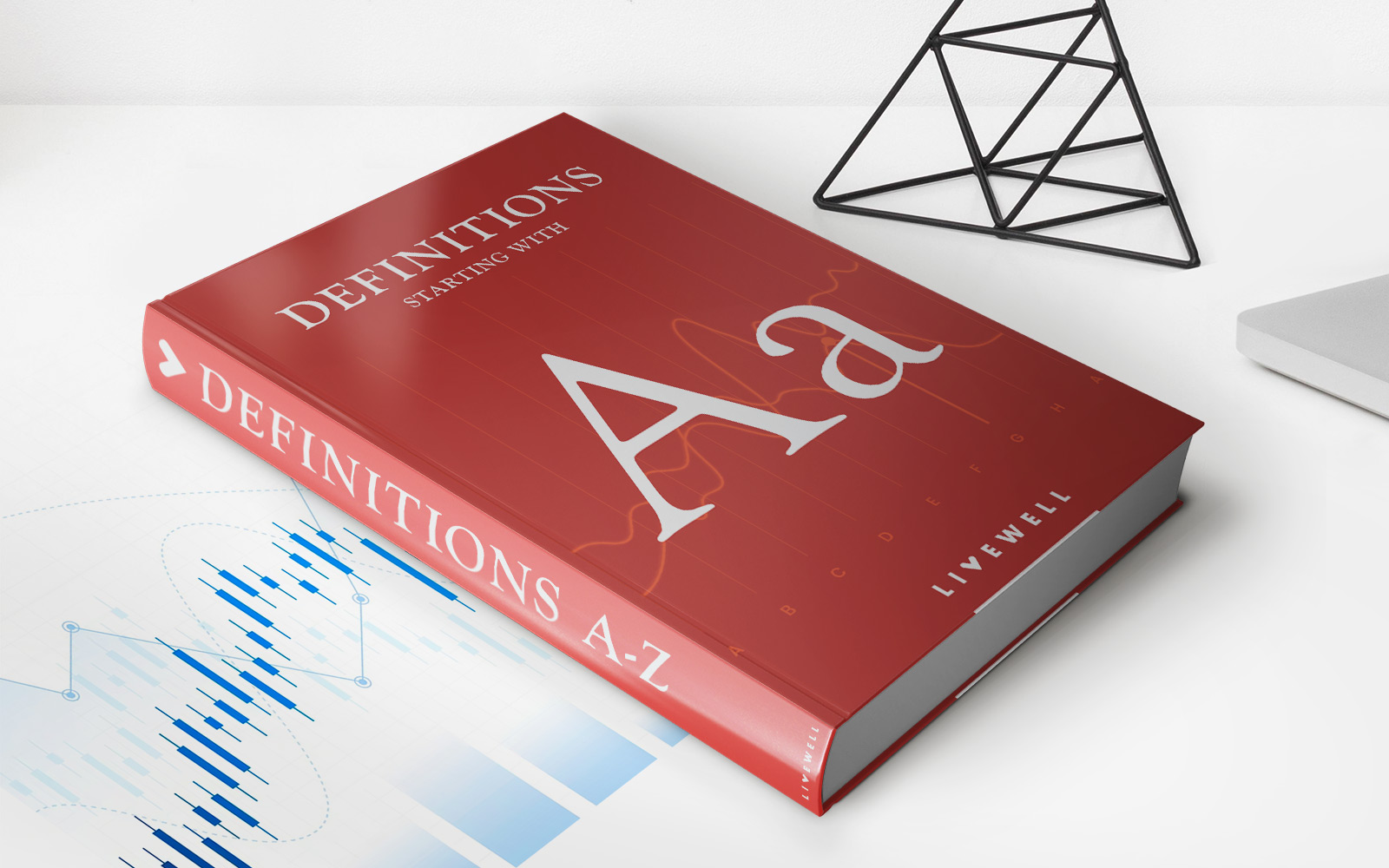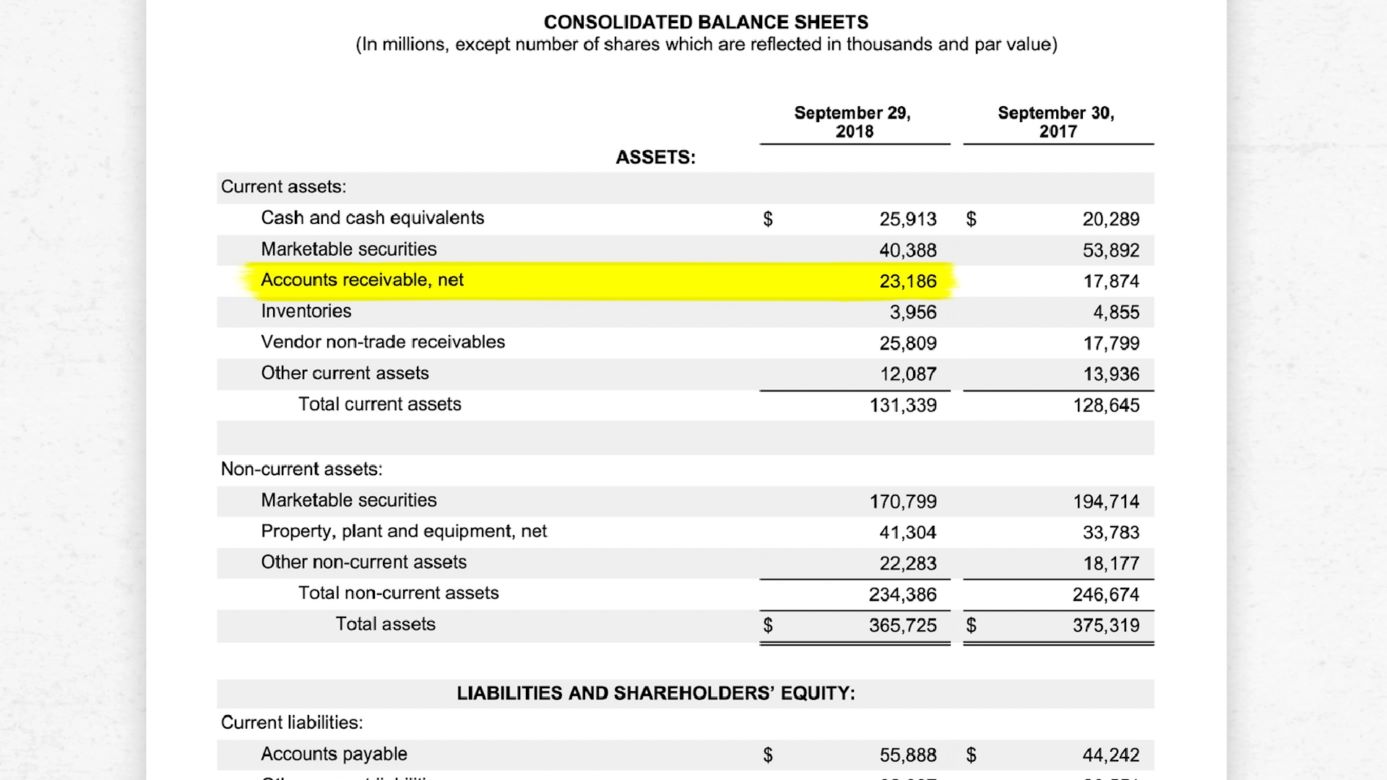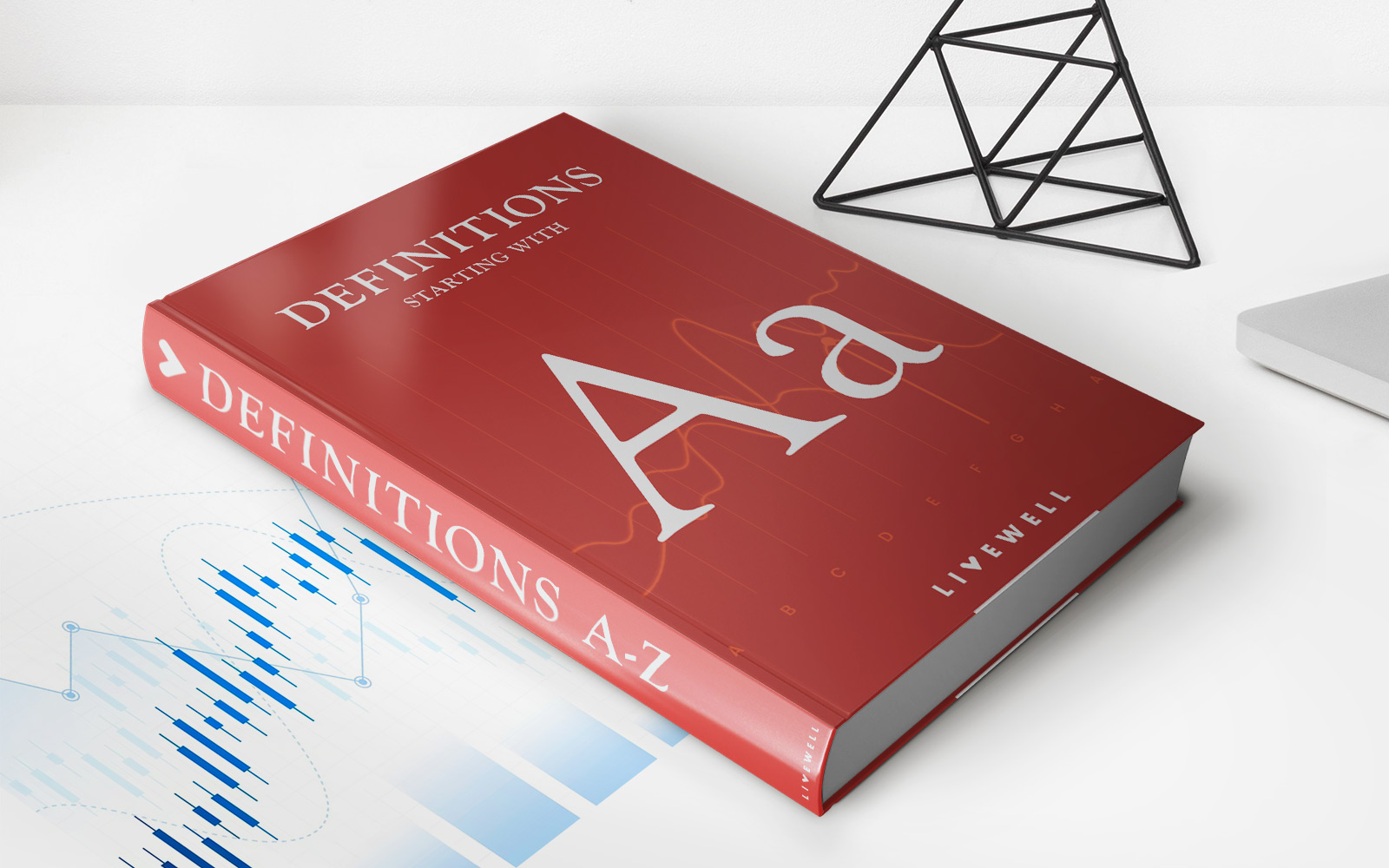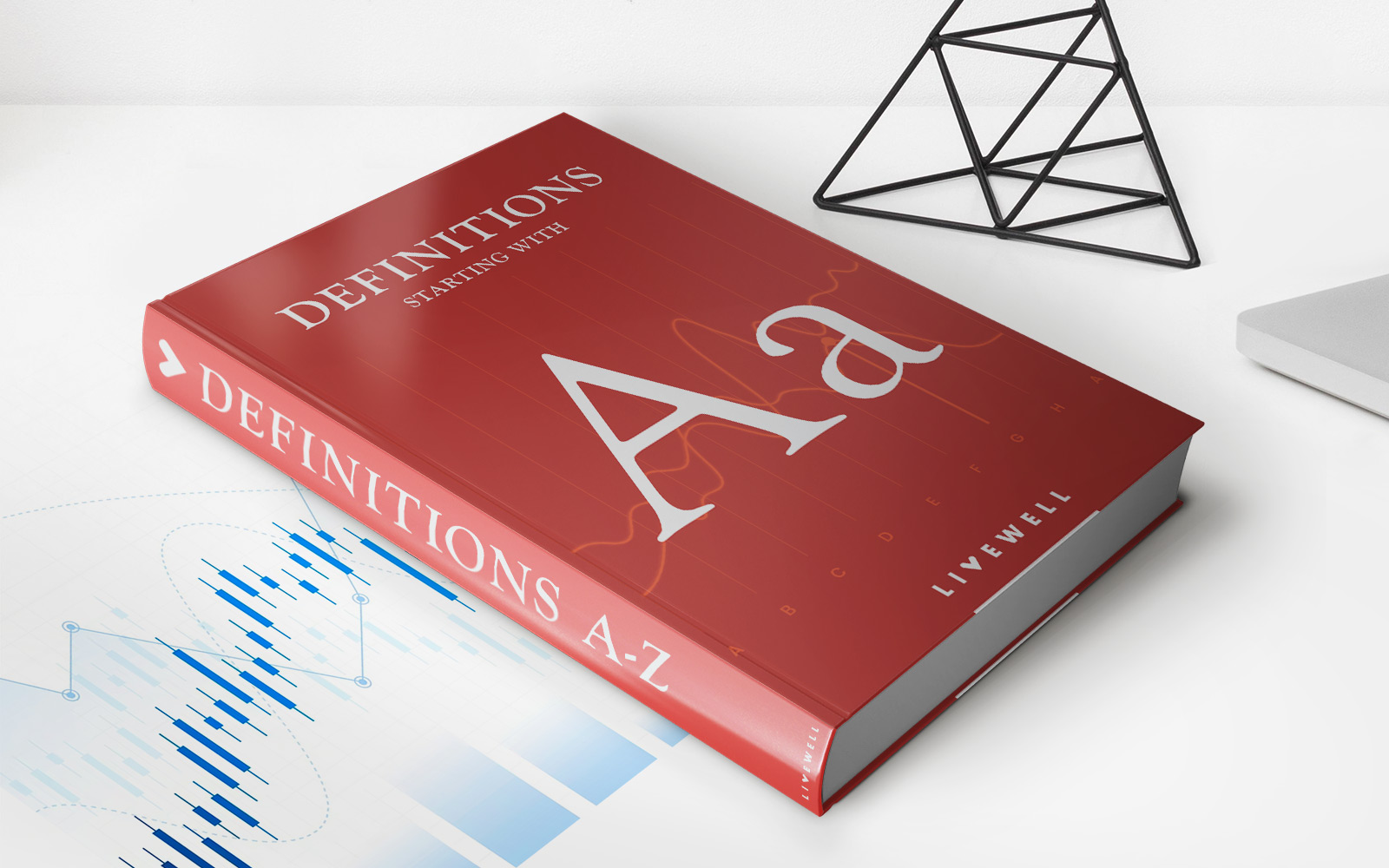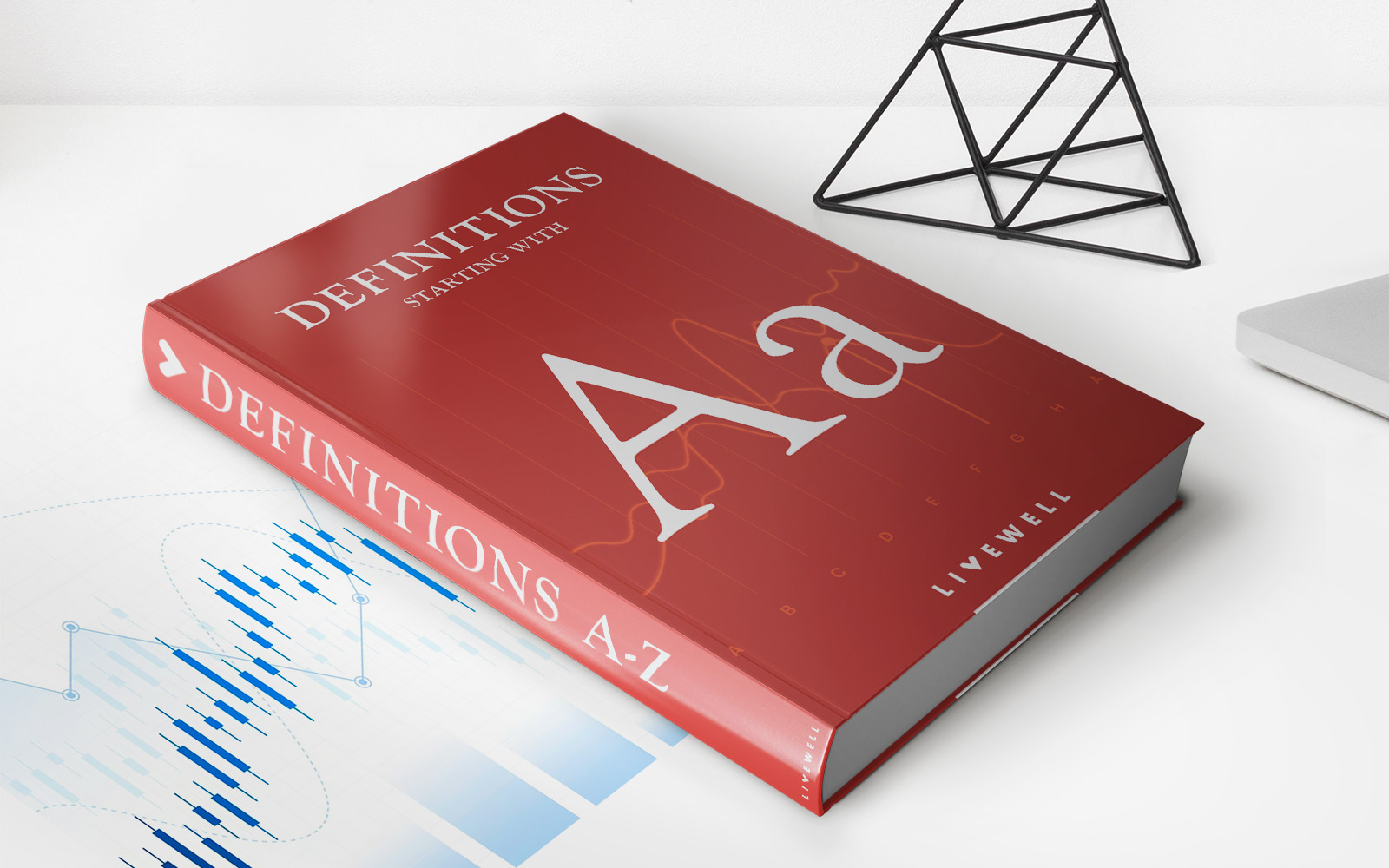

Finance
What Is A Note Receivable In Accounting
Published: October 12, 2023
Learn about note receivable in accounting and its importance in finance. Understand the concept of a note receivable and how it impacts financial statements.
(Many of the links in this article redirect to a specific reviewed product. Your purchase of these products through affiliate links helps to generate commission for LiveWell, at no extra cost. Learn more)
Table of Contents
- Introduction
- Definition of a Note Receivable
- Purpose and Use of Note Receivables in Accounting
- Recording Note Receivables in the Accounting Books
- Valuation and Measurement of Note Receivables
- Recognition and Disclosure of Note Receivables in Financial Statements
- Analysis and Interpretation of Note Receivables
- Conclusion
Introduction
Welcome to the world of finance! In the realm of accounting, one of the essential elements to understand is a note receivable. This financial instrument plays a crucial role in the day-to-day operations of businesses, allowing them to extend credit to their customers and other entities. By doing so, companies can generate additional revenue while managing their cash flow effectively. In this article, we will delve into the concept of note receivables, exploring their definition, purpose, accounting treatment, and more.
A note receivable, also known as a promissory note, is a written promise by a borrower to pay a specific amount of money to the lender at a predetermined future date or on demand. It serves as evidence of a debt and outlines the terms and conditions of the loan, including the principal amount, interest rate, repayment period, and any additional provisions. Note receivables are primarily used when a company sells goods or services on credit or when it provides loans to customers, employees, or other parties.
The use of note receivables offers several advantages for businesses. Firstly, it provides a legal framework that formalizes the debtor-creditor relationship, ensuring that both parties are aware of their rights and obligations. This helps to mitigate the risk of non-payment or disputes in the future. Additionally, note receivables can generate interest income for the creditor, allowing them to earn a return on their investment and enhance their profitability. Moreover, by offering credit terms to customers, companies can attract more clients and foster long-term relationships, thereby boosting sales and customer loyalty.
Now that we have gained a basic understanding of what a note receivable is and why it is important, let’s dive into the accounting treatment of note receivables. In the following sections, we will explore how note receivables are recorded, valued, and disclosed in the financial statements, as well as how they can be analyzed and interpreted to assess the financial health and performance of a company.
Definition of a Note Receivable
A note receivable is a financial instrument that represents a written promise to receive a specified amount of money at a future date. It is a legal agreement between the creditor (lender) and the debtor (borrower), outlining the terms and conditions of a loan or credit transaction. The debtor issues a written document called a promissory note, stating the principal amount, interest rate, repayment terms, and any other provisions agreed upon.
Note receivables are commonly used by businesses when they provide goods, services, or loans on credit. They allow companies to extend credit to their customers, employees, or other entities, providing flexibility in payment arrangements. The note receivable serves as evidence of the debt owed to the creditor and specifies the timeline for repayment.
Unlike accounts receivable, which are typically due for payment within a short period, note receivables have longer-term repayment periods. The terms can range from a few months to several years, depending on the agreement between the parties involved. Interest may be charged on the outstanding balance, based on an agreed-upon rate or the prevailing market rate.
It is essential to distinguish between a note receivable and accounts receivable. While both represent amounts owed to a company, they differ in terms of payment timing and documentation. Accounts receivable are usually short-term and do not involve a formal written agreement. In contrast, note receivables involve longer-term liabilities and require the issuance of a promissory note.
In summary, a note receivable is a financial instrument that represents a written promise by a debtor to pay a specific amount of money to a creditor at a predetermined future date or on demand. It is a legal agreement that sets forth the terms and conditions of a loan or credit transaction and provides flexibility for repayment. Note receivables are an integral part of the accounting process, enabling companies to manage their cash flow, earn interest income, and extend credit to customers and other parties.
Purpose and Use of Note Receivables in Accounting
Note receivables play a significant role in the field of accounting, serving various purposes for businesses. Let’s explore the key reasons why companies utilize note receivables in their accounting practices:
- Generating Revenue: One of the primary purposes of note receivables is to generate revenue for the lending company. By offering credit to customers or providing loans to other entities, businesses can earn interest income on the outstanding balances. This interest adds to the company’s revenue streams and contributes to its profitability.
- Managing Cash Flow: Note receivables provide a means for businesses to manage their cash flow effectively. Instead of receiving immediate payment for goods or services, companies can extend credit terms to customers, allowing them to make installment payments over time. This helps smooth out cash inflows and provides a more consistent and predictable cash flow pattern.
- Expanding Market Reach: By offering note receivables, companies can attract a broader customer base and expand their market reach. Customers who may not have the immediate financial resources to make full payment upfront may be more inclined to purchase goods or services if offered an installment plan. This can lead to increased sales and customer loyalty.
- Facilitating Transactions: Note receivables simplify the process of conducting business transactions. Instead of requiring immediate payment, companies can negotiate terms of credit, allowing customers to take possession of goods or services without the need for immediate cash. This flexibility can enhance business relationships and facilitate smoother transactions.
- Diversifying Investment Options: In addition to extending credit to customers, companies may use note receivables as a means of diversifying their investment portfolio. They can invest in notes issued by other entities that have a reliable repayment history and earn interest income on those investments. This allows companies to leverage their financial resources and potentially earn higher returns.
- Reducing the Impact of Bad Debts: Note receivables are a way for companies to minimize the risk of bad debts or non-payment. By formally documenting the terms of the loan or credit transaction, including the interest rate, repayment terms, and any collateral or guarantees, companies can have legal recourse in case of default. This helps protect their financial interests and reduces the impact of bad debts on their financial statements.
In summary, note receivables serve multiple purposes in accounting. They allow businesses to generate revenue, manage cash flow, expand market reach, facilitate transactions, diversify investments, and reduce the impact of bad debts. By incorporating note receivables into their accounting practices, companies can effectively manage their finances, enhance profitability, and foster long-term relationships with customers and other entities.
Recording Note Receivables in the Accounting Books
When a company enters into a note receivable agreement, it is crucial to record the transaction properly in the accounting books. This ensures accurate financial reporting and allows for effective management of the company’s assets and liabilities. Here are the steps involved in recording note receivables:
- Initial Recording: The first step is to record the creation of the note receivable in the accounting books. This involves debiting the notes receivable account and crediting the appropriate account, such as accounts receivable or loans receivable, depending on the nature of the transaction.
- Interest Accrual: If the note receivable carries an interest rate, the company needs to accrue interest income over the period of the note. This involves debiting the interest receivable account and crediting the interest income account. The interest income is typically accrued based on the time elapsed and the interest rate specified in the note.
- Principal Repayments: When the debtor makes principal payments on the note, the company needs to update the accounting records accordingly. This involves debiting the cash or bank account for the received payment and crediting the notes receivable account for the principal portion paid off.
- Interest Collection: As the company receives interest payments from the debtor, it needs to record these transactions as well. The cash or bank account is debited for the amount received, while the interest receivable account is credited to reduce the outstanding interest owed by the debtor.
- Adjustments for Accrued Interest: At the end of each accounting period, the company must adjust the interest receivable account to reflect any accrued interest that has not yet been collected. This involves debiting the interest income account and crediting the interest receivable account.
- Recognition of Bad Debts: If there is an indication that the debtor may not be able to fulfill their repayment obligations, the company needs to assess the collectability of the note receivable. If it is determined that the debtor is unlikely to repay, a bad debt expense is recognized by debiting the bad debt expense account and crediting the allowance for doubtful accounts or notes receivable account.
It is crucial to follow proper accounting principles and adhere to the relevant financial reporting standards when recording note receivables. This ensures that the financial statements accurately reflect the company’s financial position and performance. Additionally, it is essential to maintain comprehensive documentation of the note receivable agreements, including the promissory notes and any relevant correspondence, to support the accounting entries and facilitate future auditing or verification processes.
In summary, properly recording note receivables in the accounting books involves initial entry, interest accrual, principal repayments, interest collection, adjustments for accrued interest, and recognition of bad debts. By following these steps and adhering to accounting principles, companies can ensure accurate financial reporting and effective management of their note receivables.
Valuation and Measurement of Note Receivables
Valuing and measuring note receivables is crucial for accurate financial reporting and assessing the financial health of a company. Here are the key aspects to consider in the valuation and measurement process:
- Initial Recognition: Note receivables are initially recorded at their fair value, which is typically their face value. The face value represents the principal amount stated in the promissory note.
- Interest Accrual: If the note carries an interest rate, the interest income is accrued over the period of the note. The interest income is calculated based on the face value of the note, the interest rate, and the time elapsed. It is important to make adjustments for accrued interest at the end of each accounting period to accurately reflect the financial position of the company.
- Discounts and Premiums: Note receivables may be issued at a discount or a premium. A discount occurs when the note is issued for an amount less than its face value, while a premium occurs when the note is issued for an amount greater than its face value. Discounts and premiums are amortized over the life of the note and are recognized as interest income or expense.
- Impairment Assessment: Companies need to assess the collectability of note receivables and determine if any impairment loss needs to be recognized. Impairment typically occurs when there are indications that the debtor may not be able to fulfill their repayment obligations. If impairment is deemed necessary, the carrying value of the note receivable is reduced, and a corresponding bad debt expense is recognized.
- Reclassification: Note receivables are classified as either current or non-current assets based on their expected collection timeline. If the note is due for collection within one year from the reporting date, it is classified as a current asset. If the collection period extends beyond one year, it is classified as a non-current asset.
- Subsequent Measurement and Disclosure: After the initial recognition, note receivables are measured at amortized cost using the effective interest rate method. This means that any discounts or premiums are spread out and recognized over the term of the note. Companies are required to disclose the carrying value, interest rates, repayments terms, and any related contingent liabilities in their financial statements.
It is essential for companies to accurately value and measure their note receivables to ensure the reliability of their financial statements. Adhering to accounting principles and relevant financial reporting standards, companies can provide transparent and meaningful information to stakeholders, facilitating better decision-making and financial analysis.
In summary, the valuation and measurement of note receivables involves initial recognition at their fair value, accrual of interest income, accounting for any discounts or premiums, impairment assessments, appropriate reclassification, subsequent measurement at amortized cost, and disclosure of relevant information. By following these guidelines, companies can accurately reflect the value and financial impact of note receivables in their accounting records.
Recognition and Disclosure of Note Receivables in Financial Statements
Proper recognition and disclosure of note receivables in the financial statements are essential for transparent and accurate financial reporting. Here are the key aspects of recognizing and disclosing note receivables:
- Balance Sheet: Note receivables are typically presented as a separate line item on the balance sheet under the category of assets. The balance sheet should disclose the total carrying value of note receivables, including any related accrued interest, discounts, premiums, and impairment allowances. Companies should also classify note receivables as either current or non-current assets based on their expected collection timeline.
- Income Statement: Interest income derived from note receivables should be recognized in the income statement over the period of the note using the effective interest rate method. Companies should disclose the amount of interest income recognized during the reporting period to provide an accurate representation of their revenue streams.
- Statement of Cash Flows: Cash inflows from principal payments on note receivables should be reported under the cash flow from investing activities section of the statement of cash flows. Similarly, interest received from note receivables should be classified as cash flow from operating activities.
- Disclosure Notes: In the footnotes to the financial statements, companies should provide detailed information about note receivables. This can include the terms and conditions of the notes, maturity dates, interest rates, repayment terms, and any related collateral or guarantees. Companies should also disclose any significant concentrations of credit risk arising from their note receivables.
- Impairment Disclosures: If there is an indication of impairment, companies should disclose the methods and assumptions used to assess the collectability of note receivables. They should detail any impairment losses recognized and any changes in the amount of the impairment allowance during the reporting period.
- Related Party Transactions: If note receivables involve transactions with related parties, companies should disclose the nature and extent of these transactions in the financial statements. This helps ensure transparency and prevent any conflicts of interest.
Proper recognition and disclosure of note receivables in the financial statements provide stakeholders with a clear understanding of the company’s financial position, performance, and associated risks. By adhering to relevant financial reporting standards and providing comprehensive disclosure notes, companies promote transparency and build trust with investors, creditors, and other users of the financial statements.
In summary, note receivables should be appropriately recognized and disclosed in the financial statements. This includes presenting them as separate line items on the balance sheet, recognizing interest income in the income statement, reporting cash flows related to note receivables in the statement of cash flows, providing comprehensive disclosure notes, and disclosing any impairments or related party transactions. By adhering to these guidelines, companies can communicate the value and risks associated with their note receivables effectively.
Analysis and Interpretation of Note Receivables
Analyzing and interpreting note receivables is essential for assessing the financial health and performance of a company. By examining the details and trends associated with note receivables, stakeholders can gain valuable insights into the company’s credit risk, cash flow, and collection effectiveness. Here are key factors to consider in the analysis and interpretation of note receivables:
- Credit Quality: Assessing the credit quality of note receivables is vital to understanding the risk of non-payment. Analyzing the creditworthiness of the debtors, their historical repayment patterns, and any collateral or guarantees provided can help evaluate the likelihood of full repayment.
- Aging Schedule: Analyzing the aging schedule of note receivables provides valuable information about the collection effectiveness. Categorizing the outstanding balances by the length of time they have been outstanding allows for an assessment of the proportion of receivables that are overdue or at risk of default.
- Interest Income: Examining the interest income generated from note receivables is important to assess the profitability of the company. Comparing the interest income to the outstanding balance of note receivables can indicate the effectiveness of the company’s interest rate policies and the potential for earnings growth.
- Impairment Provision: Analyzing the impairment provision for note receivables helps assess the accuracy of the company’s estimation of bad debts. Comparing the provision to the historical write-offs or actual default rates can provide insights into the company’s risk management practices and their conservatism in recognizing potential losses.
- Collection Period: Evaluating the average collection period of note receivables allows for an understanding of the company’s efficiency in collecting outstanding debts. Comparing the collection period to industry benchmarks or historical trends can indicate the effectiveness of the company’s credit policies and their ability to convert receivables into cash.
- Concentration of Receivables: Assessing the concentration of note receivables among customers or industries is important in identifying potential risks. A high concentration of note receivables with a single customer or industry increases the company’s exposure to the financial health of that entity or sector.
Additionally, financial ratios and comparative analysis can be performed using note receivables data to gain further insights and provide meaningful interpretations. Ratios such as the receivables turnover ratio, the average collection period, and the aging schedule analysis can help assess the company’s liquidity, efficiency, and credit risk management practices.
Overall, the analysis and interpretation of note receivables provide stakeholders with valuable insights into a company’s credit risk, cash flow, collection effectiveness, and the overall quality of its receivables. By performing these analyses and interpreting the results, stakeholders can make informed decisions about investing in or extending credit to the company, and the company can identify areas for improvement in its credit management processes.
Conclusion
Note receivables play a vital role in the world of finance and accounting. They enable businesses to extend credit to customers, generate revenue, manage cash flow, and foster long-term relationships. Understanding the definition, purpose, valuation, and disclosure of note receivables is essential for accurate financial reporting and effective decision-making.
In this article, we have explored the concept of note receivables, outlining their definition as a written promise to receive a specified amount of money at a future date. We have discussed the various purposes and advantages of note receivables, including generating revenue, managing cash flow, and expanding market reach.
We have also delved into the accounting treatment of note receivables, discussing the steps involved in recording them, measuring their value, and disclosing relevant information in the financial statements. By adhering to proper accounting principles and providing comprehensive disclosures, companies can ensure transparency and build trust with stakeholders.
Furthermore, we have highlighted the importance of analyzing and interpreting note receivables. By assessing factors such as credit quality, aging schedule, interest income, impairment provisions, collection period, and concentration of receivables, stakeholders can gain valuable insights into the company’s credit risk, cash flow, and collection effectiveness.
It is essential to remember that note receivables are not without risks, as they are exposed to potential defaults and non-payment. Therefore, companies should adopt robust credit risk management practices, regularly monitor the collectability of note receivables, and adjust their impairment provisions accordingly.
In conclusion, note receivables are powerful financial instruments that facilitate commerce and financial operations. By understanding and effectively managing note receivables, businesses can improve their financial stability, enhance revenue generation, and mitigate credit risks. With proper recognition, measurement, and disclosure, note receivables can play a significant role in achieving the financial objectives of a company while maintaining transparency and trust with stakeholders.


